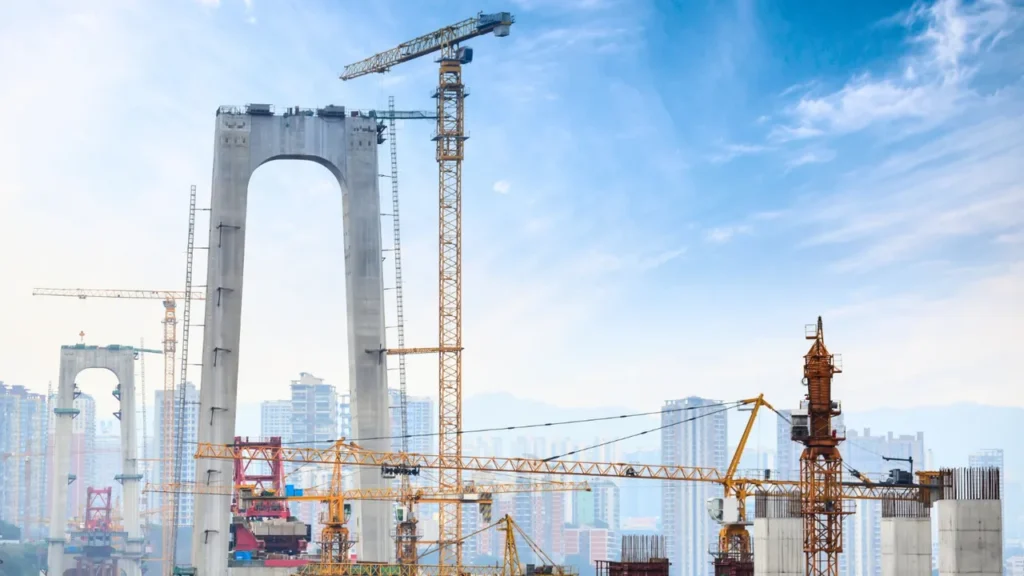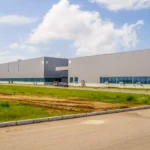Infrastructure megaprojects stand as the most powerful symbols of human innovation, determination, and progress. From monumental bridges connecting nations to vast urban railways transforming city life, these projects not only shape the skylines but also define the economic and social backbone of modern civilization. In today’s era of rapid globalization, technology, and sustainability, infrastructure megaprojects are setting new benchmarks in scale, design, and impact.
Introduction — The Rise of 21st-Century Infrastructure Megaprojects
The 21st century has witnessed a renaissance in engineering excellence, driven by an unprecedented number of infrastructure megaprojects across the globe. Defined as large-scale investments typically exceeding billions of dollars, these projects include bridges, highways, airports, power plants, and urban rail systems. They represent not only economic ambition but also national pride, often reflecting the technological leadership of the countries that build them.
From global bridges spanning oceans to advanced urban railways running beneath megacities, modern infrastructure represents a seamless blend of architectural design and engineering precision. Among the most notable trends is the increasing reliance on advanced materials, such as high-strength steel. In particular, steel structure china has become synonymous with efficiency, precision, and speed in global construction.
Engineering Scale and Vision Behind Global Megaprojects
Pushing the Limits of Design
Modern infrastructure is no longer about functionality alone—it’s about pushing the limits of what is possible. Engineers are continuously reimagining how cities and nations connect, integrating new technologies and materials to achieve record-breaking feats. These projects often involve overcoming massive environmental challenges, from deep-sea foundations to high-altitude construction.
- Hong Kong–Zhuhai–Macao Bridge: A 55-kilometer sea link connecting three major cities, combining bridge, tunnel, and artificial islands into one continuous system.
- Channel Tunnel: An underwater rail link between the UK and France, showcasing precision engineering and cross-border collaboration.
- Dubai Creek Tower: A futuristic skyscraper designed to surpass traditional height records while integrating advanced wind and seismic resistance systems.
These examples show that infrastructure megaprojects are not just about engineering — they are about human vision. Through bold imagination and advanced tools like digital modeling, BIM (Building Information Modeling), and prefabrication, engineers can now plan, simulate, and execute projects with unprecedented accuracy and speed.
The Role of Advanced Materials and Steel Structures
At the heart of these megaprojects lies one key factor: materials. The evolution of steel, concrete, and composite technology has redefined the way infrastructure is built. Among them, steel has emerged as the backbone of large-scale construction thanks to its strength-to-weight ratio, flexibility, and recyclability.
Steel structure china has particularly reshaped the global construction landscape. Chinese manufacturers and engineering firms now lead the world in steel structure production capacity, design innovation, and modular construction methods. Their expertise enables faster assembly, higher precision, and cost efficiency—critical advantages in time-sensitive projects.
| Material | Key Advantages | Common Applications |
|---|---|---|
| Steel | High tensile strength, prefabrication-friendly, recyclable | Bridges, airports, high-rise buildings |
| Concrete | Durability, sound insulation, low maintenance | Tunnels, foundations, retaining walls |
| Composite | Lightweight, corrosion-resistant, aesthetic flexibility | Architectural façades, roof structures |
This combination of material advancement and digital engineering has allowed megaprojects to scale up faster while minimizing risk and waste. Prefabrication, especially with modular steel components, has become a preferred approach in large-scale infrastructure like airports, bridges, and railway stations.
Urban Railways as the Backbone of Modern Cities
Expanding Mass Transit Networks
As cities expand, efficient mobility becomes a fundamental challenge. Urban railways have become the backbone of modern urban development—supporting millions of daily commuters while reducing traffic congestion and environmental impact. Cities such as Shanghai, London, and Dubai have embraced mass transit expansion as a key step toward sustainability.
Modern urban railway systems now incorporate automation, AI-driven signaling, and smart ticketing to enhance safety and efficiency. Modular construction methods—often supported by steel structure china—allow for faster implementation even in dense metropolitan zones. In addition to providing convenience, these systems contribute to carbon reduction targets by shifting public reliance from cars to rail.
- Shanghai Metro Expansion: One of the world’s most extensive subway networks, integrating over 800 kilometers of track.
- Riyadh Metro: A transformative project reshaping public transport in Saudi Arabia’s capital with climate-resilient design.
- London Crossrail (Elizabeth Line): Europe’s most complex urban rail system, improving connectivity across London and its suburbs.
Iconic Rail Infrastructure Megaprojects
The transformation of urban railways represents not only progress but also an evolution in how cities interact with technology and sustainability. Many rail systems are now integrated with renewable energy sources, recycled construction materials, and intelligent monitoring systems that predict maintenance needs in real time.
Moreover, countries are increasingly focusing on passenger experience—using open, airy architectural designs made possible by lightweight steel structure china components. These innovations help cities enhance aesthetic appeal while improving functionality and safety.
Global Bridges — Connecting Continents and Economies

The Symbolism of Global Bridges
Few structures capture human imagination like bridges. They symbolize connection, progress, and unity. Global bridges play a crucial role in global trade, tourism, and regional integration, linking economies across oceans and continents.
Today’s bridge designs combine artistry and precision engineering. Long-span suspension bridges, cable-stayed structures, and movable bridges demonstrate the creativity and skill of modern engineers. They’re not only feats of construction but also expressions of cultural identity and national pride.
Engineering Innovation in Bridge Design
Building global bridges is one of the most complex engineering endeavors on Earth. Each project demands deep expertise in aerodynamics, seismic resistance, material science, and environmental adaptation. Today, many bridges rely on digital twin technology — a virtual simulation of the structure that allows engineers to monitor performance in real time and predict potential failures before they occur.
Advanced steel structure china frameworks are frequently chosen for these megaprojects due to their durability, tensile strength, and ability to handle long-span construction. By combining modular fabrication with automated welding and precision CNC machining, these bridges can be assembled faster while maintaining superior quality and alignment.
- Millau Viaduct (France): A breathtaking cable-stayed bridge rising 343 meters above the Tarn Valley, blending architectural beauty with structural power.
- Akashi Kaikyo Bridge (Japan): The world’s longest central span suspension bridge, designed to withstand typhoons and earthquakes.
- Pelješac Bridge (Croatia): Built with advanced Chinese steel technology, connecting previously divided parts of the country and symbolizing global cooperation.
Each of these projects demonstrates how innovation in materials, digital modeling, and sustainability has redefined the possibilities of bridge engineering — a true reflection of modern infrastructure excellence.
Sustainability and Smart Engineering in Megaprojects
Green Construction Practices
As environmental awareness grows, infrastructure megaprojects are shifting toward sustainable design and construction. Modern builders emphasize reducing carbon footprints through the use of recycled steel, renewable energy, and waste management systems. Steel remains one of the most sustainable materials in this regard — it is 100% recyclable and can be reused without losing quality.
In China, Europe, and the Middle East, many new megaprojects integrate green roofs, solar panels, and efficient drainage systems. These innovations reduce operational costs while improving long-term environmental performance. The construction phase itself also benefits from digital management tools that track energy consumption, equipment use, and material sourcing in real time.
Smart Infrastructure and Digital Monitoring
The rise of the Internet of Things (IoT) and artificial intelligence has revolutionized how megaprojects are operated and maintained. Smart sensors embedded in bridges, tunnels, and railways continuously collect data on temperature, vibration, and stress distribution. AI algorithms analyze this data to predict structural fatigue or maintenance requirements long before visible damage occurs.
For instance, the Smart Railway Network China leverages AI-driven predictive maintenance to ensure reliability across thousands of kilometers of track. Similarly, the Smart Highway Project in the Netherlands uses solar-powered lighting, automated traffic management, and digital twin models to optimize energy use and safety simultaneously. These examples showcase how modern infrastructure is no longer static—it evolves and learns through data.
Economic and Social Impact of Infrastructure Megaprojects
Beyond the impressive engineering, megaprojects bring profound economic and social transformation. Each major construction project creates tens of thousands of jobs, revitalizes local industries, and attracts global investment. The multiplier effect extends beyond construction to sectors such as logistics, tourism, and technology.
From an economic standpoint, infrastructure megaprojects often stimulate regional growth by improving trade and connectivity. For instance, enhanced urban railway systems reduce commute times, boost property values, and promote urban densification. Bridges and ports, meanwhile, foster international commerce and geopolitical cooperation.
Socially, these megaprojects improve accessibility and quality of life. They reduce travel time, enhance safety, and provide inclusive design features that accommodate all demographics. Yet, challenges remain — managing costs, ensuring transparency, and maintaining timelines continue to test even the most advanced nations.
China’s Leadership in Steel Structure Megaprojects
China has become a global leader in the design and implementation of steel-based infrastructure. Through its Belt and Road Initiative, the country exports both technology and expertise, supporting the development of world-class bridges, airports, and railway terminals across Asia, Africa, and Europe. The success of steel structure china lies in its combination of large-scale production capacity, digital integration, and government-backed innovation programs.
Projects such as the Danyang–Kunshan Grand Bridge (the world’s longest bridge) and the Beijing Daxing International Airport Terminal exemplify the nation’s ability to deliver complex projects that merge architectural artistry with engineering precision. These structures incorporate massive amounts of prefabricated steel, designed and assembled with minimal on-site disruption.
Many international contractors now collaborate with Chinese manufacturers to leverage this expertise. Companies like XTD Steel Structure provide engineering solutions that emphasize sustainability, modularity, and efficiency—setting new standards for how large-scale infrastructure should be built in the 21st century.
Lessons and Future Outlook
The story of infrastructure megaprojects is far from over. As the world faces new challenges—climate change, population growth, and digital transformation—future megaprojects must embrace flexibility, data-driven design, and eco-friendly materials. The lessons from past ventures highlight the importance of meticulous planning, cross-border collaboration, and adaptive technologies.
- Modular Steel Design: Allows for rapid construction and disassembly while minimizing waste.
- AI-Driven Project Management: Improves scheduling, budgeting, and predictive maintenance accuracy.
- Renewable Energy Integration: Ensures that infrastructure contributes to, rather than consumes, sustainability goals.
Looking ahead, the fusion of automation, robotics, and data analytics will define the next generation of megaprojects. As nations strive for greener and smarter urban environments, the synergy between technology and engineering will become the cornerstone of future development.
Conclusion — Engineering the Future of Infrastructure
In the modern age, infrastructure megaprojects are more than just massive investments—they are embodiments of human creativity and resilience. From global bridges that link continents to urban railways that connect millions daily, these projects represent humanity’s continuous pursuit of progress.
By leveraging cutting-edge materials such as steel structure china and integrating sustainability with smart technologies, engineers are transforming how the world builds, moves, and thrives. As innovation continues to evolve, the true legacy of today’s megaprojects will not be measured by their size alone, but by how they redefine the future of modern engineering and create a more connected, sustainable world.



